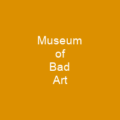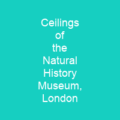The Cloisters: A Medieval Gem in Upper Manhattan
Imagine stepping into a time capsule, where the echoes of medieval Europe still resonate. The Cloisters, a museum nestled in New York City’s Upper Manhattan neighborhood, is like a portal to another era. Founded by George Grey Barnard and later acquired by John D. Rockefeller Jr., this institution has become a treasure trove for art enthusiasts and history buffs alike.
The Genesis of the Cloisters
George Grey Barnard, an American sculptor and collector, had a unique way of acquiring his treasures. He cycled through the French countryside, unearthing fallen Gothic masterworks along the way. One such find was a tomb effigy of Jean d’Alluye, which he used as a bridge over a small stream—a whimsical yet symbolic gesture that encapsulates his adventurous spirit.
By 1925, Barnard had amassed quite an impressive collection, but his personal finances were in shambles. He sold the collection to John D. Rockefeller Jr., who saw potential in transforming it into something more substantial. Rockefeller’s vision was to create a museum that would evoke the essence of medieval European monastic life.
Design and Construction
The site for the Cloisters was chosen with care, situated on a hill for its elevation and views. The building and gardens were designed by Charles Collens, incorporating elements from abbeys in Catalonia and France. Parts of several French abbeys were disassembled stone-by-stone and shipped to New York City, where they were reconstructed into a cohesive whole.
Construction took place over five years, with the new building and gardens officially opening on May 10, 1938. The museum’s collection of about 5,000 pieces is displayed thematically yet arranged to enhance the atmosphere created by the architectural elements, making it an immersive experience.
Key Objects in the Collection
The Cloisters boasts a vast collection of medieval European works including fountains, baptismal fonts, chairs, aquamaniles, and illuminated manuscripts such as the French ‘Cloisters Apocalypse,’ Jean Pucelle’s ‘Hours of Jeanne d’Evreux,’ the ‘Psalter of Bonne de Luxembourg,’ and the ‘Belles Heures du Duc de Berry.’ The collection also includes liturgical metalwork vessels, rare pieces of Gothic furniture and metalwork, as well as examples of architectural elements and decorative arts.
One significant acquisition was the Bonne de Luxembourg manuscript attributed to Jean le Noir. This small (12.5 × 8.4 × 3.9 cm) work deals with death, commissioned for Duke John II’s wife Bonne de Luxembourg around 1348-49. The manuscript was previously misattributed but was studied by art historians after its acquisition in 1969.
The Nine Heroes and The Hunt of the Unicorn
Two dedicated tapestry rooms stand out: the South Netherlandish Nine Heroes (14th-century, 1385) and Flemish The Hunt of the Unicorn (15th-century, 1500). The Nine Heroes room features original 14th-century tapestries with chivalric figures representing the scriptural and legendary Nine Worthies. The Hunt of the Unicorn room consists of colorful hangings and fragment textiles designed in Paris and woven in Brussels or Liège.
The tapestries were produced for Anne of Brittany between 1495-1505 and donated to the museum by Rockefeller in 1937. A large ‘Nativity’ panel (c. 1500) from Burgos Tapestry was acquired by the museum in 1938, featuring individual scenes influenced by identifiable panel paintings.
The Cuxa Cloisters
At the heart of the museum is the Cuxa cloisters, which were originally erected at the Benedictine Abbey of Sant Miquel de Cuixà on Mount Canigou in the northeast Spanish Pyrenees. The monastery was abandoned in 1791 and fell into disrepair; its roof collapsed in 1835 and its bell tower fell in 1839. About half of its stonework was moved to New York between 1906 and 1907.
The Cuxa cloisters are the museum’s centerpiece both structurally and thematically, with intricate medallion patterns, sculptures depicting saints and nobility from the 13th century. The apse contains three large female saints and a Burgundian Bishop. Six effigies are supreme examples of sepulchral art, including those from the Bellpuig Monastery in Catalonia.
The Treasury Room
The Treasury room was opened in 1988 to celebrate the museum’s 50th anniversary. It largely consists of small luxury objects acquired by the Met after it had built its initial collection, and draws heavily on acquisitions from the collection of Joseph Brummer.
Other notable pieces include the French 13th-century arm-shaped silver reliquary and a 15th-century deck of playing cards. The room is a testament to the museum’s commitment to preserving and showcasing medieval artistry in its finest form.
The Library and Archives
The Cloisters contains one of the Metropolitan’s 13 libraries, focusing on medieval art and architecture with over 15,000 volumes of books and journals. The library functions primarily as a resource for museum staff but is available by appointment to researchers, art dealers, academics, and students.
The archives contain early sketches and blueprints made during the early design phase of the museum’s construction, as well as historical photographic collections. These include photographs of medieval objects from the collection of George Joseph Demotte and a series taken during and just after World War II showing damage sustained to monuments and artifacts, including tomb effigies.
A Specialist Museum
The Cloisters is governed by the board of the Metropolitan Museum of Art. The museum regularly acquires new works and rarely sells or otherwise gets rid of them. In 2011 it purchased ‘The Falcon’s Bath,’ a Southern Netherlands tapestry dated c. 1400–1415, one of the best preserved surviving examples of its type.
Recent exhibitions include ‘Small Wonders: Gothic Boxwood Miniatures’ in conjunction with the Art Gallery of Ontario and Rijksmuseum, Amsterdam. The museum has hosted numerous musical recitals and medieval theater performances, including The Miracle of Theophilus in 1942 and John Gassner’s adaptation of The Second Shepherds’ Play in 1954.
The Cloisters has been featured in various works of popular culture since its opening in 1938, including Meditation on Violence (1948), Portrait of Jennie (1948), Coogan’s Bluff (1968), and West Side Story (2021).

The Cloisters is more than just a museum; it’s a living, breathing testament to the art and architecture of medieval Europe. From its founding by George Grey Barnard to its current status as a leading institution in the Metropolitan Museum of Art, The Cloisters continues to captivate visitors with its immersive exhibits and rich history.
You want to know more about The Cloisters?
This page is based on the article The Cloisters published in Wikipedia (retrieved on November 28, 2024) and was automatically summarized using artificial intelligence.







